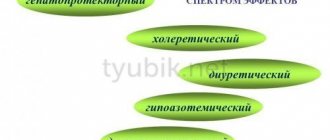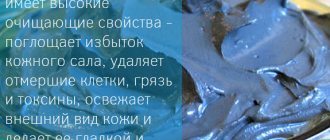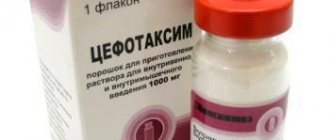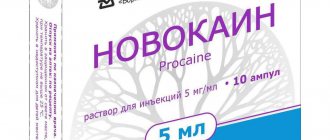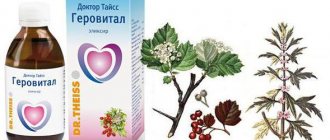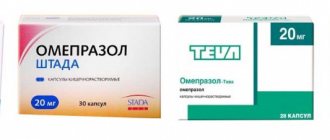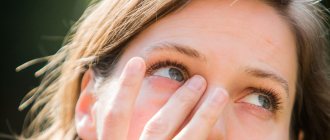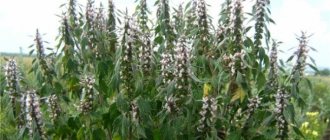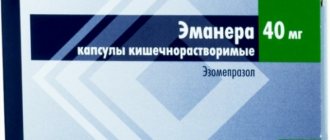Mud therapy is one of the most common methods of treating many diseases using the gifts of nature. There are several sources of medicinal mud on the territory of our country, and one of them is known throughout the world. This is the healing mud of Lake Tambukan - Tambukan mud.
Tambukan mud is a natural remedy that has antiseptic properties and stimulates the regenerative processes of the skin in case of various lesions. The main purpose of using Tambukan mud is to treat burns, ulcers, wounds, hemorrhoids, proctitis, rectal fissures, prostatitis, joint pain and a number of other diseases.
Tambukan mud is extracted from the lake of the same name, located near the city of Pyatigorsk. This unique lake is several thousand years old. Its origin still remains a mystery. According to one version, this is the dry bottom of an ancient sea. According to the second, the lake is formed by numerous underground springs that feed it. There is another assumption that this lake is just a dry bed of the Etoko River, which changed it and now flows a little to the side.
But it got its name from the founder of the Kabardian family, Prince Tambiev, who is buried in the vicinity of the lake. Translated from Kabardian, the name of the lake means “Shelter for Tambia.” The Tambukan deposit is one of the largest in our country and is protected by the state.
Questions, answers, reviews on the drug Tambukan mud
You can look at questions about the drug, as well as ask your question to a specialist, using a free consultation with a pharmacist or pharmacist.
The information provided is intended for medical and pharmaceutical professionals. The most accurate information about the drug is contained in the instructions supplied with the packaging by the manufacturer. No information posted on this or any other page of our website can serve as a substitute for personal contact with a specialist.
| * | Our site does not sell medicines and other goods; they must be purchased in pharmacies, in accordance with current laws. Data on prices and availability in pharmacies is updated twice a day. Current prices can always be seen in the section Searching and ordering medications in pharmacies. |
Clinical use
Many dispensaries use Tambukan formations in their activities; their benefits are difficult to overestimate. Due to the presence of lecithin, this mud is used in the dermatological field as lotions, compresses, and applications. The product promotes the fastest cell regeneration and exhibits healing properties. Peloids have antimicrobial, anti-inflammatory, immunomodulatory and absorbable effects on tissues and organs.
The use of therapeutic Tambukan mud is often combined with electrotherapy. This method allows you to normalize the functioning of the endocrine and nervous systems. Ultrasonic frequencies and mud therapy are used to improve metabolic processes. The procedure is aimed at accelerating tissue regeneration and activating blood circulation.
Indications for use
- burns, long-term non-healing ulcers and wounds, radiation damage to the skin;
- psoriasis, acne, neurodermatitis, eczema, urticaria, lichen planus, overproduction of sebum;
- gingivitis, periodontitis and other oral problems;
- infertility, adhesions, menstrual irregularities, various inflammatory gynecological diseases (during the period of complete remission);
- chronic prostatitis, erectile dysfunction;
- osteochondrosis, rheumatoid diseases, cellulite.
When is peloidotherapy not performed?
Tambukan mud has certain restrictions on therapy. Indications for use are determined only by a qualified doctor after a complete diagnostic and laboratory examination. In addition to individual intolerance, mud procedures are contraindicated during pregnancy, childhood, and also during exacerbation of diseases of internal organs (liver, gastrointestinal tract, pancreas, urinary tract). Therapy is not carried out for oncology, pathology of the hematopoietic system, anemia, diabetes, heart disease.
How does healing mud work?
In the mechanism of action of therapeutic peloids, exocrine, endocrine, and trigger elements play an important role. Therapeutic mud has an anti-inflammatory, desensitizing, analgesic, and absorbable effect.
Peloid therapy improves hemo and lymphodynamics, reduces the activity of exudative and infiltrative processes, softens adhesive structures, enhances the hormonal function of the endocrine glands, and promotes the development of muscle fibers.
Mud is also a natural source of antibiotics due to the large number of spore-bearing bacteria, actinomycetes, and molds it contains, a significant part of which produces penicillin-like substances, which determines the antibacterial effect in the treatment of diseases of the skin and mucous membranes.
The high effectiveness of mud therapy for many diseases has led to its use not only at resorts, but also at the place of residence of patients.
How effective is the treatment?
Peloid therapy is an effective method of complex treatment of joint diseases and the entire musculoskeletal system. Penetrating through the skin, the active components have a positive effect on the problem area.
The beneficial substances included in the composition relieve inflammation and accelerate metabolic processes. It has been proven that when completing a therapeutic course, the plasticity of joints improves and cartilage and bone tissue are restored.
The technique is prescribed depending on the indications of patients of different ages - elderly, adults and children (over 2 years old). Both therapeutic and preventive measures are carried out. This type of treatment is prescribed in rehabilitation centers after fractures, and in sports for recovery from sprains and bruises.
Peloid therapy, its effect on epithelial tissue
Balneo-mud manipulations are widely in demand in the cosmetology industry. This is the first remedy to improve skin tone, stabilize salt and energy balance. Masks based on peloids exhibit a rejuvenating, antipruritic, antiseptic and tonic effect.
Practice has proven that the procedures improve blood flow, eliminate peeling, and stop the inflammatory process. In addition, Tambukan mud increases skin elasticity, smoothes wrinkles and restores relief. Indications for use on the face:
- eczema;
- acne;
- psoriasis;
- lichen planus;
- neurodermatitis;
- hives;
- increased sebum production.
Mud wraps and baths are prescribed for cellulite. The procedures are easy to carry out at home. The plant substance is heated in a water bath to 40 °C, then applied to problem areas and wrapped in film. After half an hour, rinse with water. The course consists of 10-15 sessions, which alternate every other day.
Release form and composition
Tambukan mud is a thick plastic homogeneous mass from brown to ash-black (mud extracted from the bottom of the lake is packaged in various containers). In terms of chemical composition, it is a lipid complex dissolved in sunflower oil.
The following organic and inorganic substances were found in Tambukan mud:
- saturated and unsaturated high molecular weight organic acids;
- phospholipids (cephalin, lecithin);
- glycerides;
- carotenoids;
- sterols;
- chlorophyll;
- hydrocarbons;
- glycosides;
- enzymes;
- mediators (acetylcholine, histamine, etc.);
- nitrogenous substances;
- mineral salts;
- vitamins;
- prostaglandins;
- trace elements (iron, manganese, lithium, zinc).
Tambukan Lake in Pyatigorsk
Tambukan Lake is located in the vicinity of Pyatigorsk (Caucasian Mineral Waters), on the border with Kabardino-Balkaria; for many years it has been the main (for silt sulfide mud) raw material base of our country. The study of the physico-chemical composition and medicinal properties of medicinal mud has proven its multifaceted local and general effect on the human body. Blue-green algae that live in a reservoir on the surface of silt produce a unique lipid complex, which includes phospholipids (lecithins and cephalins), pigments, and sulfur-containing substances. The lipid complex is involved in the formation of nerve sheaths, increases the speed of transmission of nerve impulses, improves memory and attention, helps normalize blood glucose levels, prevents the development of cirrhosis, helps increase muscle endurance, prevents obesity, and participates in the formation of surfactant in the lungs. Lipids play an important role in maturation and aging, the body's defense reactions, including the prevention of various pathological conditions. Largely thanks to the lipid complex, dirt accelerates regeneration, and fatty acid salts isolated from lipids also have antibacterial activity.
Useful properties of mud
Mud therapy is a therapeutic technique for restoring the musculoskeletal system using mud. In scientific sources there is another name for this procedure – peloidotherapy.
Therapeutic muds are sediments of water bodies and are formed under the influence of climatic, chemical-biological, geochemical, and geological factors. In some cases, they are characterized by homogeneity and an ointment-like consistency.
For therapeutic purposes, mud applications are used on joints and baths. The composition of mud (peloids) includes various biogenic components with high therapeutic activity - hydrogen sulfide, mineral compounds, trace elements, organic substances. One of their advantages over medications is their natural composition.
The complex has a positive effect on bone and cartilage tissue and triggers a self-healing mechanism in the joints. When used, peloids remove inflammation, warm and accelerate tissue regeneration.
As a result, there is an increase in metabolism and trophism of organs. They are used to treat inflammatory diseases and recover from injuries. Mud therapy is often used for arthrosis of the knee joint.
What are the benefits of peloid therapy:
- accelerates the fusion of bone tissue;
- has an antimicrobial effect;
- accelerates metabolism in joints;
- warms and nourishes tissues;
- improves joint mobility;
- has an anti-inflammatory effect;
- restores cartilage tissue.
Patient opinions
According to expert observations, it turned out that people who underwent peloid therapy were satisfied with the result. Positive dynamics were noted after the second or third session. The healing Tambukan mud significantly improves the quality of life and restores the functional functioning of organs. The indications for use (patient reviews are enthusiastic) are extensive, so everyone can undergo treatment without harm to health.
Natural colloidal formations reduce pain, relieve severe symptoms and improve overall well-being. I was pleased that peloids do not provoke allergies and are well tolerated by the body. The unique plant substrate enhances natural beauty and stabilizes health.
Classification of peloids
Today, the following classifications of medicinal mud are distinguished, which are used to treat diseases:
Peat
A natural complex that consists mainly of organic compounds - humus and plant residues. The mixture contains microelements, biologically active components, and humic substances.
It warms up the joints well because it has high heat transfer. Features: has a good anti-inflammatory and antimicrobial effect, accelerates regeneration processes.
Silt
Natural complex with a high content of hydrogen sulfide. Similar in composition to the previous one - formed as a result of fermentation of bacteria. The compound consists of rotted algae mixed with clay.
Mud therapy, peloid therapy
Dear Oksana!
The use of mud from Lake Tambukan belongs to such a direction in medicine as peloidotherapy (mud therapy). This is one of the oldest methods of natural therapy. There are 4 types of therapeutic mud in nature: silt, sapropel, peat and sopochnaya. In resort practice, silt mud, which forms in salt lakes and sea estuaries, is most often used. The most famous and studied is Tambukan medicinal mud .
Contraindications for mud therapy
Contraindications to any type of mud therapy are acute, chronic (in the stage of severe exacerbation) inflammatory processes, malignant neoplasms, fibroids, fibroids, ovarian cysts, functional ovarian failure due to endocrine diseases, tuberculosis of any organs, diseases of the cardiovascular system (heart defects at the stage decompensation, pronounced phenomena of atherosclerosis, stage 3 hypertension, aortic and cardiac aneurysm, aortic stenosis, varicose veins, vascular diseases of the central nervous system), diseases with a tendency to repeated bleeding, blood diseases, nephritis, nephrosis, severe thyrotoxicosis, infectious diseases, including sexually transmitted infections in the acute and contagious stage, pronounced depletion of the body.
Directions for use and dosage
Tambukan mud is intended for external use. It is applied to the affected areas in a thin layer. In addition, the mud can be used under bandages, which are changed every other day.
The duration of the procedure is 15-30 minutes, after which the affected area is washed with clean water or wiped with a damp cloth and then with a dry towel. After completing the procedure, the patient should rest for 15-20 minutes.
To achieve a more pronounced therapeutic effect, it is recommended to lightly steam the treated area immediately before the procedure, for example, in a water bath or with a damp, heated towel.
Mud applications are carried out daily or every other day. One course requires 10 to 15 procedures.
Where is it contained?
The source of this unique remedy is Lake Tambukan. It is located near the city of Pyatigorsk in the Stavropol Territory.
According to some reports, approximately 1.5 million tons of healing mud are concentrated at the bottom of the lake.
It began to be used for medical purposes at the end of the 19th century, but people have known about its medicinal properties for a long time. This fact is confirmed by the presence of homemade baths near the lake and recesses carved into the stones for health and beauty treatments. Experts attribute their appearance to the Bronze Age.
